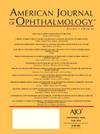预测年龄相关性黄斑变性的早期发病:机器学习方法。
IF 4.1
1区 医学
Q1 OPHTHALMOLOGY
引用次数: 0
摘要
设计:回顾性病例对照研究受试者:本研究使用两个数据集:三级眼科保健中心数据集(930名AMD患者,392名早发性,538名晚发性)和All of Us数据集进行验证(560-580名早发性AMD患者,560-580名匹配的无AMD对照)。方法收集一家三级医院的AMD患者(1999-2023)和全美成人纵向队列研究项目(All of Us Research Program)的健康记录(数据收集时间为2016年6月至2025年2月)。使用均匀流形近似和投影(UMAP)对三级眼科保健中心数据集进行无监督聚类,以识别不同的患者亚组。训练监督机器学习模型,包括梯度增强决策树(GBDT)、逻辑回归和随机森林,以预测早发性AMD。主要结果测量方法使用受试者工作特征曲线(AUC)下的面积来评估模型的性能,而使用基于树的模型的基尼指数和逻辑回归的系数大小来评估特征重要性。此外,使用验证数据集(All of Us)中的2 × 2列联表估计与早发性AMD相关的合并症的优势比。结果聚类确定了两个不同的患者组,其中一个(93.08%的早发性AMD为主)显示炎症性关节疾病、高血压和血脂异常的高发率。多监督机器学习模型在从早期合并症(55岁前诊断)预测早发性AMD方面达到了约76%的准确率。与聚类一样,对监督机器学习模型的分析发现,炎症性关节疾病、高血压和血脂异常是最具预测性的特征。使用All of Us数据集验证了这些合并症,原发性高血压(OR: 5.80, 95% CI: [4.25-7.93], p < 0.05)、类风湿关节炎(OR: 4.61, 95% CI: [1.55-13.72], p < 0.05)和高脂血症(OR: 5.16, 95% CI: [3.76-7.08], p < 0.05)显示与早发性AMD密切相关。结论在眼科检查中筛查高血压、血脂异常和炎性关节疾病可能有助于AMD的早期发现和干预。本文章由计算机程序翻译,如有差异,请以英文原文为准。
Predicting Early Onset of Age-Related Macular Degeneration: A Machine Learning Approach.
OBJECTIVES
Develop a machine learning model that predicts early-onset AMD based on early patient comorbidities DESIGN: Retrospective Case-Control Study SUBJECTS: This study used two datasets: a tertiary eye care center dataset (930 AMD patients, 392 early-onset, 538 late-onset) and the All of Us dataset for validation (560-580 AMD patients early-onset, 560-580 matched controls without AMD).
METHODS
Health records of AMD patients from a tertiary hospital (1999-2023) and the All of Us Research Program, a nationwide longitudinal cohort of U.S. adults (data collected 6/2016-2/2025) were collected. Unsupervised clustering using Uniform Manifold Approximation and Projection (UMAP) was performed on the tertiary eye care center dataset to identify distinct patient subgroups. Supervised machine learning models, including gradient-boosted decision trees (GBDT), logistic regression, and random forests, were trained to predict early-onset AMD.
MAIN OUTCOMES MEASURES
Model performance was evaluated using the area under the receiver operating characteristic curve (AUC), while feature importance was assessed using the Gini index for tree-based models and coefficient magnitudes for logistic regression. Additionally, odds ratios for comorbidities associated with early-onset AMD were estimated using 2 × 2 contingency tables in the validation dataset (All of Us).
RESULTS
Clustering identified two distinct patient groups, with one (93.08% early-onset AMD dominated) showing high rates of inflammatory joint disorders, hypertension, and dyslipidemia. Multiple supervised machine learning models achieved ∼76% accuracy in predicting early-onset AMD from early comorbidities (diagnosed before age of 55). Like clustering, analysis of supervised machine learning models identified inflammatory joint disorders, hypertension, and dyslipidemia as the most predictive features. These comorbidities were validated using the All of Us dataset, with essential hypertension (OR: 5.80, 95% CI: [4.25-7.93], p < 0.05), rheumatoid arthritis (OR: 4.61, 95% CI: [1.55-13.72], p < 0.05), and hyperlipidemia (OR: 5.16, 95% CI: [3.76-7.08], p < 0.05) showing strong associations with early-onset AMD.
CONCLUSION
Screening hypertension, dyslipidemia, and inflammatory joint disorders in ophthalmologic evaluations may enable earlier AMD detection and intervention.
求助全文
通过发布文献求助,成功后即可免费获取论文全文。
去求助
来源期刊
CiteScore
9.20
自引率
7.10%
发文量
406
审稿时长
36 days
期刊介绍:
The American Journal of Ophthalmology is a peer-reviewed, scientific publication that welcomes the submission of original, previously unpublished manuscripts directed to ophthalmologists and visual science specialists describing clinical investigations, clinical observations, and clinically relevant laboratory investigations. Published monthly since 1884, the full text of the American Journal of Ophthalmology and supplementary material are also presented online at www.AJO.com and on ScienceDirect.
The American Journal of Ophthalmology publishes Full-Length Articles, Perspectives, Editorials, Correspondences, Books Reports and Announcements. Brief Reports and Case Reports are no longer published. We recommend submitting Brief Reports and Case Reports to our companion publication, the American Journal of Ophthalmology Case Reports.
Manuscripts are accepted with the understanding that they have not been and will not be published elsewhere substantially in any format, and that there are no ethical problems with the content or data collection. Authors may be requested to produce the data upon which the manuscript is based and to answer expeditiously any questions about the manuscript or its authors.

 求助内容:
求助内容: 应助结果提醒方式:
应助结果提醒方式:


